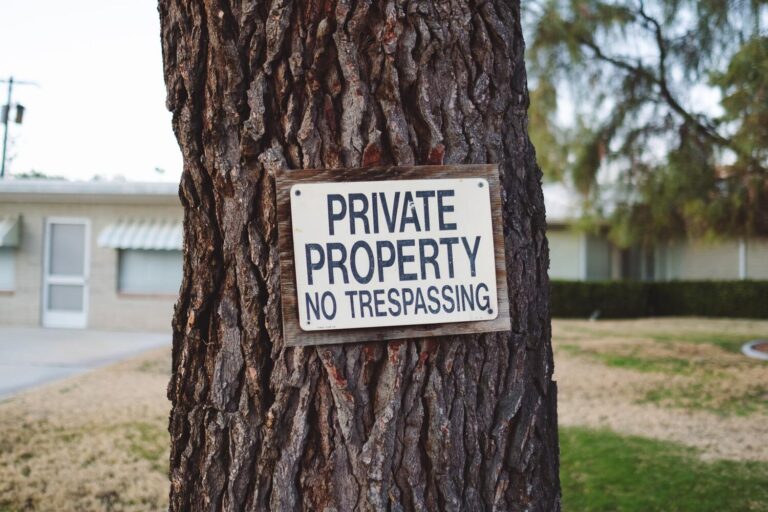How To Handle a Holdover Tenant (Made Simple)

I still get excited when I’m able to fill any of my rental properties with a tenant. However, that excitement turns into worry when a tenant’s lease is approaching its expiration. Either, the tenant will renew their lease or become a holdover tenant.
With Buy & Hold Investing, the rental income from the tenants covers the mortgage payment. Unfortunately, a vacant property still requires the mortgage to be paid. Without a tenant, the landlord has to pay out of pocket.
What Is a Holdover Tenant?
A holdover tenant (also known as a tenant in sufferance) is a renter who remains in a property after their lease has expired with the permission of the landlord. If a person does not have permission from the landlord to remain after their lease has expired, then the person is a trespasser.
What Is a Holdover Rate?
Landlords normally will increase the rent substantially during a holdover tenancy. Some leases will contain a holdover rate detailing how much the rent will increase by. The purpose of the holdover rate is to encourage tenants to not stay beyond their lease’s expiration date.
Furthermore, a holdover tenant could potentially terminate their agreement with little to no notice. Therefore, having a substantial rent increase allows landlords to take on the risk while building up their cash reserves for the moment the tenant decides to leave.
Types Of Holdover Tenancy
The key to a holdover tenant is that there is an agreement between the renter and the landlord. The two main types of holdover tenancy are a tenant at will and periodic tenancy.
Tenant At Will
A tenant at will is a renter that has verbal permission from the landlord to stay in a property after their lease expired. A new lease is not created nor is there a set end date to stay. At any moment, the holdover tenant or the landlord can cancel their agreement.
Periodic Tenancy
A periodic tenancy is when a renter remains in a property for consecutive months without a predetermined end date. This is also known as a “Month-to-Month” lease. The tenancy ends when the renter informs the landlord of their final month.
What To Do At the End Of a Tenancy
When there are 30-days left on the lease, then it’s a good time for the landlord to reach out to their tenants: renew the lease or move out. However, the number of days notice may vary depending on the state.
Some tenants are worth keeping while other tenants shouldn’t expect the landlord to renew their lease. The landlord can tell their tenants they will not be renewing their lease by sending a move-out letter.
Here’s how to do it:
Step 1: Prepare A Move-Out Letter & Checklist
Aside from the tenant taking their personal belongings, there are other items that the tenant will be responsible for before they move-out.
Download a FREE sample copy of a move-out letter along with a cleaning checklist here:
Step 2: Send Out a Move-Out Letter
Mail a copy of the letter to the tenant. Record that you did this in the case the tenant stays beyond their lease.
Step 3: Conduct a Walkthrough
Conduct a walkthrough with the tenants. This will allow you to discuss potential damages and give them an opportunity to resolve the issue while you hold onto the security deposit.
Also, bring the pictures that were taken at move-in. This hard evidence may resolve disputes quicker.
For example, if the lease states that the tenant can paint the walls but needs to be re-painted to the original color, the landlord has the right to deduct re-painting from the security deposit.
Step 4: Make Repairs
If there are any damages to the property, use the security deposit to pay for the repairs. Keep track of the repairs along with the cost in an itemized statement.
Take pictures as evidence. If there is normal “wear and tear”, I wouldn’t charge the tenants for that expense.
Step 4: Return Security Deposit
Mail the full or remaining security deposit to the new address of the tenant within 14 to 30 days. Also, include in the letter a copy of the itemized statement and pictures.
How To Evict a Holdover Tenant
If a tenant refuses to move out or leave, then the next step is to legally evict them. However, it’s important to note that laws vary from state to state when it comes to the eviction process. Some states may be more “tenant-friendly” allowing the process to take up to 6 months.
Therefore, always consult a real estate attorney for professional advice.
Step 1: Identify Type Of Eviction
There are two types of eviction notices: 1) ”pay or vacate” notice and 2) notice to comply.
A “pay or vacate” notice is when a tenant has not been paying their rent. This type of notice should include the number of days they have to pay before being evicted. This notice should also clearly state everything due, such as rental amount, late fees, penalties, etc.
Another type of notice is a notice to comply. This notice is for situations when the tenants have violated the terms of the lease. This notice should include how many days the tenant to comply. Otherwise, they will be evicted.
Step 2: Deliver Eviction Notice
Deliver the eviction notice to the tenants and mail a copy through certified mail. Some states allow notice to be posted on the tenant’s door. In other states, owners are not allowed to deliver the notice.
Therefore, familiarize yourself with the state law and strictly follow it. One mistake in following the proper procedure could cause you to fail in court. I always recommend having an experienced real attorney on your team that you can seek advice from.
Make a copy of the eviction notice for your records. Record the date and time when the notice was delivered and how it was delivered. If it was hand-delivered, also record who it was given to.
Step 3: File Eviction Lawsuit
If a tenant has not complied with the notice, then the next step is to file an eviction lawsuit.
If you hire an attorney, then they can handle the rest and even show up in court for you. The following are the items that you need to provide to your attorney:
- A brief explanation of the eviction
- Copy of the lease
- Copy of the notice
- Details of how you delivered the notice
If you plan to file the lawsuit yourself, then you need to file an unlawful detainer lawsuit with your local courthouse. A court date will be issued for you and the tenant.
Step 4: Serve the Lawsuit
The unlawful detainer lawsuit will need to be served directly to the tenant by a third-party.
Step 5: Attend the Court Hearing
If the judge rules in your favor, the tenant will be required to pay all the money owed and the judge will issue a writ of restitution.
This document will give a landlord the legal right to remove a tenant. This document will give a tenant a certain amount of days to vacate the property.
If you plan to represent yourself and not an attorney, be sure to bring the following documents to the court hearing:
- The signed lease
- The notice
- The lawsuit
- All other records and documentation related to the tenant
There might be a situation where a tenant will request a hardship stay, which can delay the eviction process. This request is not automatically approved. Instead, a tenant must prove to the judge that they will suffer extreme hardship if they were to vacate.
Step 6: Coordinate With a Sheriff
Bring the writ of restitution to the sheriff. The sheriff’s department will schedule a date and time when they will be at the property. The sheriff’s job is to prevent any confrontation and physically remove the tenant, if necessary.
Step 7: Remove the Tenant
If the tenant still hasn’t vacated, wait for the sheriff before you attempt to remove their contents.
Hire movers to relocate their personal belongings and have trash bags readily available. Coordinate with the sheriff on where to relocate their items.
Also, take pictures to document the entire process and have the locks changed as soon as possible!
How Much Does It Cost To Evict?
The legal fees usually cost about a few hundred dollars. However, attorney fees can cost about a few thousand dollars. Now, include the loss of rent and the eviction process has become extremely costly.
However, landlords could file a Use and Occupancy Motion.
This will require tenants to continue to pay rent while the eviction process is going on. This is helpful to landlords who live in tenant-friendly states where it could take months to evict someone.
Therefore, a way to evict a tenant without having to go to court is by offering “Cash For Keys.”
Instead of taking the tenant to court, it can be cheaper overall just to return their security deposit to have them vacate. The deal can be sweetened by offering a moving truck to help move their possessions.
Conclusion
Real estate is a business that revolves around people. Whenever possible, work with your tenants.
Ideally, tenants will renew their lease once their current lease expires. However, that is not always the case and a tenant has to become a holdover tenant.
Landlords can avoid a costly eviction process by doing their due diligence when screening potential tenants. Also, landlords should be firm and consistent when it comes to late fees.
It helps to include an outline of an exact fee schedule, such as when is the latest a payment can be received and how much is the late fee.
If an eviction can’t be avoided, familiarize yourself with your state laws. Most importantly, work with an experienced real estate attorney to help with the lawsuit.






